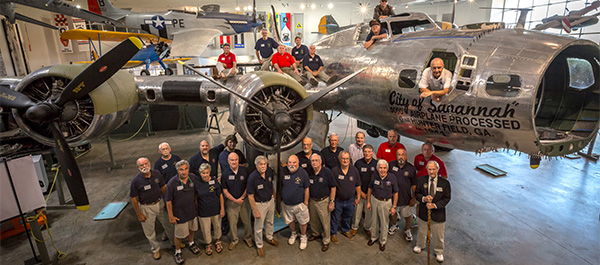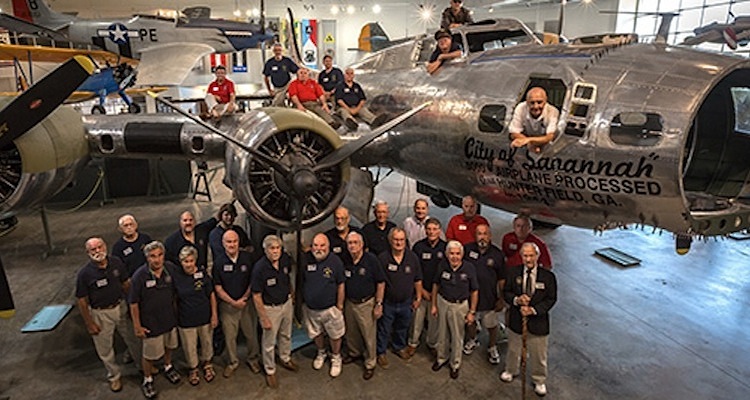
They called it the Mighty Eighth—the Eighth Air Force, the most effective bomber force of World War II. Though “thousand-plane raids” are bruited as the criterion of aerial enormity, at its peak the Eighth was launching 2,000 bombers at a time against multiple targets. The Eighth was established in January 1942 at Savannah Army Air Base, more familiarly known as Hunter Field. Here and elsewhere, the Eighth’s forces marshaled—slowly at first, but in such growing numbers that by November 1944 the 5,000th airplane was sent to England from Hunter. It was a B-17G appropriately named City of Savannah, for it had been bought with half a million dollars donated by the people of Savannah and surrounding Chatham County. (B-17s cost the government about $205,000 apiece at the time, so the balance of that $500,000 was apportioned for the training of the crew.) City of Savannah survived 44 missions, only to return to the U.S. and disappear under the scrapper’s torch.
Now there is a new City of Savannah, an airplane that holds pride of place in the Mighty Eighth Air Force Museum, a short drive down I-95 from Savannah International Airport. Though it will never again fly, it has been restored—and work continues—in an effort to make it the finest static-display B-17 in the world. Nearly every World War II system works: turrets, ancient radios, engines and motors, switches and relays, controls and cables.
The B-17 that became Savannah had its own unusual history. Rolled out of the Boeing factory just after V-E Day, it was parked until 1947, when it was flown to Hazen, N.D., to serve as a war memorial outside the town’s high school. In 1951 the B-17 began a 20-year career as a photo-mapper in Canada before returning to North Dakota to become a borate bomber. Soon everything of WWII relevance had been stripped out, replaced by slurry tanks, simple 1970s avionics and the bare necessities of firebombing.
In 1984 the airplane made its last flight, to Dulles International Airport for delivery to the Smithsonian in trade for two Lockheed P2V Neptunes. It was stored in an open-sided hangar for two decades, where it was cocooned in bubble wrap and became home to thousands of birds. “The plastic had adhered to the fuselage and was very difficult to remove,” says restoration director Jerry McLaughlin. “The interior still held considerable amounts of caked slurry, and it took us a year just to clean the airplane and begin stripping parts. We plan to be the only publicly displayed B-17 in the world that has all three power turrets working,” says McLaughlin. The ball and chin turrets are already functional, and the upper turret should be powered up by the time you read this. (For more on one of the volunteers behind the turret restorations, see “Restored” in our next issue.)





